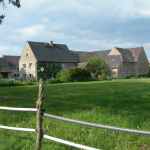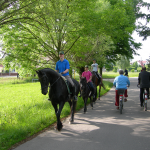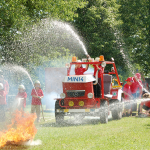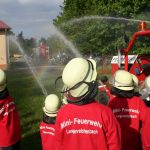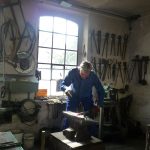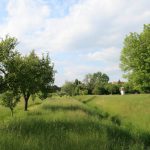Langenreichenbach, Saxony, Germany
The municipality Langenreichenbach is located on the lavishly greened village along the road, surrounded by level fields used for agriculture in a typical LPG culture landscape of the former East Germany: only few shrubs and woodlands, no forest and far from rivers or lakes, even further away from the cross-regional connections to railways or motorways and without any tourism. With the communal area reforms of 1994 and 1999, the 750 inhabitants have turned the self-centredness into a virtue, which drives the village as a social “power plant” – as per the motto specially selected for that occasion. The reduction in inhabitants since the political changes in 1989 could be stopped, due to the currently raised birth rate. Migration of younger citizens is practically non-existent, if any, then mostly for educational purposes. The marked satisfaction with life was recently documented in the scope of an empiric poll of the Sächsische Landesanstalt für Landwirtschaft (Saxon Federal Institute for Agriculture).
The opportunities to earn a livelihood in classical agriculture and industrial enterprises have been diminished since 1990, but have been compensated with the commitment and the initiative of the populace. Examples thereto is the high degree in self-sufficiency regarding the production of food stuff, uncountable free hours spent for the renovation of the village and the vivid social life, the creation of new job opportunities in closed value-added chains such as the biological horticulture (“From corn to sausage”) or the 500 kW bio gas plant cooperation and the solar roofs connected to the autonomous energy production. From this perspective, regular work place statistics have little value. For example, the percentage of female applicants (39%) does not hint that almost all children aged one to six are now being taken care of in the recently extended day care facility, which has been honoured countrywide for its exemplary pedagogic concept and implementation.
The close-knit social network and the together of all generations is also mirrored in the settlement policies, focused on internal development. The dominating typology of the three-sided farmhouses has been re-used as residential space for families, where more than one generation lives under one roof, or as entrepreneurial locations. No house is empty. The 25 new houses have been built inside the village on empty plots, however, priority is the maintenance of old building substances before demolition and new construction projects. Street festivals are a vital part of the public roads and strengthen the sense of community. The former feudal home, still waiting for its renovation, is now being used as a youth club and the young villagers maintain and finance it themselves. The refurbishment of the church is also part of the willingness to spend off-time for the common good, the same applies to the organised training program for toddlers organised by the voluntary fire brigade or the 71 shawm musicians, who play their jointly acquired instruments on a high level all over the world. It is not only on such trips that the inhabitants of Langenreichenbach look across their own pond. In order to ensure the quality of life in the village in a sustainable way, they can also get their ideas from the European Village Renewal Community, for example how to be self-sufficient in terms of energy supply and how to be in a spiritual and productive exchange with the region at the same time.
Evaluated: 2010

